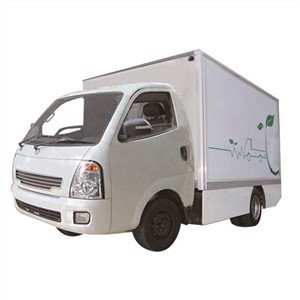Electric Motors for Semi Trucks: Revolutionizing the Trucking Industry

As the automotive industry steadily moves toward cleaner, more efficient solutions, electric motors for semi trucks are becoming increasingly important. This article delves into the various aspects of electric motors used in semi trucks, exploring their benefits, technology, applications, and future potential in the trucking industry. From technical specifications to real-world examples and practical tips, we will cover all ground to give you a comprehensive understanding of this transformative technology.
1. Understanding Electric Motors for Semi Trucks
Electric motors convert electrical energy into mechanical energy, providing motion for various applications, including semi trucks. The shift from diesel engines to electric motors aims to reduce emissions, improve fuel efficiency, and offer a smoother driving experience.
1.1 Types of Electric Motors
Electric motors are classified mainly into two types:
- DC Motors (Direct Current)
- AC Motors (Alternating Current)
DC Motors in Semi Trucks
DC motors are known for their simplicity and high starting torque, making them suitable for heavy vehicles. They are often used in smaller electric trucks.
AC Motors in Semi Trucks
AC motors, particularly induction and synchronous motors, are more commonly used in semi trucks due to their higher efficiency and reliability at varying speeds.
2. Advantages of Electric Motors in the Trucking Industry
The transition to electric motors offers several advantages for semi trucks, outlined below:
2.1 Environmental Benefits
Electric motors produce zero tailpipe emissions, significantly reducing the carbon footprint of the trucking industry. This is crucial in addressing global climate change issues.
2.2 Economic Benefits
Although the initial investment in electric trucks is higher, the reduced fuel costs and maintenance expenditures lead to significant savings over time. The use of electric motors also eliminates the need for oil changes and reduces wear on mechanical parts.
2.3 Performance Enhancements
Electric motors provide instant torque, which leads to better acceleration and smoother operation. This results in improved driving comfort and responsiveness.
3. Key Components of Electric Motors for Semi Trucks
Several key components make up an electric motor system in semi trucks:
- Battery Pack
- Electric Motor
- Power Electronics
- Regenerative Braking System
- Control System
3.1 Battery Pack
The battery pack stores energy and supplies it to the electric motor. Lithium-ion batteries are commonly used, offering a balance between energy density, weight, and cost.
3.2 Electric Motor
The electric motor drives the wheels and can be located either on the axle (axle-mounted) or on the chassis (chassis-mounted).
3.3 Power Electronics
Power electronics manage the flow of electricity between the battery and the motor, optimizing performance and efficiency.

3.4 Regenerative Braking System
This system captures energy during braking and converts it back into electrical energy, which is stored in the battery, enhancing overall efficiency.
3.5 Control System
The control system monitors vehicle performance and makes real-time adjustments to optimize energy use.
4. Real-World Applications of Electric Motors in Semi Trucks
Many manufacturers are already implementing electric motors in their semi trucks, demonstrating their viability in commercial applications.
4.1 Tesla Semi
One of the most anticipated electric semi trucks, the Tesla Semi, boasts impressive specifications with a range of around 500 miles and the ability to haul up to 80,000 pounds.
4.2 Freightliner eCascadia
The Freightliner eCascadia is another notable electric truck that incorporates an efficient electric motor with a range of about 250 miles, designed for short-haul operations.
4.3 Volvo VNR Electric
The Volvo VNR Electric is tailored for urban distribution, featuring a range of approximately 240 miles and easy charging solutions for fleets.
5. Challenges Facing Electric Motors in the Trucking Industry
Despite the numerous advantages, several challenges hinder the widespread adoption of electric motors in semi trucks:

5.1 Infrastructure Development
Charging infrastructure is not yet robust enough to support long-haul electric trucking, requiring significant investment and planning.
5.2 Battery Technology Limitations
Current battery technology impacts range, charging time, and longevity, posing challenges for heavy-duty vehicles that require long operating hours without lengthy downtime.
5.3 Initial Costs
The upfront cost associated with electric trucks remains a barrier, though this is increasingly offset by lower operating costs over time.
6. Tips for Transitioning to Electric Motors in Fleets
For fleet managers considering the transition to electric motors, the following tips may ease the process:
6.1 Assess Charging Needs
Determine the required charging infrastructure based on your fleet’s operational patterns and routes, ensuring minimal downtime during charging.
6.2 Understand Total Cost of Ownership
Calculate the long-term costs, including fuel and maintenance savings, when assessing electric trucks as a viable option for your fleet.
6.3 Pilot Programs
Start with a pilot program utilizing a few electric trucks to understand operational challenges and assess real-world performance before a full-scale rollout.
7. The Future of Electric Motors in the Trucking Industry
The future of electric motors in the trucking industry looks promising as technology improves and societal shifts toward sustainability continue.
7.1 Technological Advancements
Ongoing research into battery technologies, such as solid-state batteries, aims to enhance range, decrease charging times, and improve safety.
7.2 Policy Support
Government initiatives and incentives supporting electric vehicle adoption will likely stimulate growth in electric trucks.
7.3 Increased Adoption
As more manufacturers enter the electric truck market, competition will drive innovation and lower prices, boosting adoption rates among fleets.
8. Frequently Asked Questions (FAQ)
8.1 What is the range of electric semi trucks?
The range of electric semi trucks varies by model, generally ranging from 200 to 500 miles per charge, depending on battery capacity and weight load.
8.2 How long does it take to charge an electric semi truck?
Charging times can vary significantly; using a high-power DC fast charger, you can expect to charge an electric semi truck in approximately 30 minutes to 4 hours, depending on the battery size.
8.3 Are electric semi trucks cheaper to operate than traditional diesel trucks?
Yes, while the initial purchase cost is higher, electric trucks typically have lower operating costs due to reduced fuel and maintenance expenses.

8.4 What charging infrastructure is needed for electric semi trucks?
A combination of depot charging stations and public fast chargers is usually required to support the efficient operation of electric semi trucks.
8.5 Do electric semi trucks have the same performance as diesel trucks?
Electric semi trucks often outperform diesel trucks in acceleration and torque but may have limitations in range and payload capacity compared to traditional diesel counterparts.
8.6 Can electric motors be retrofitted into existing semi trucks?
While possible, retrofitting diesel trucks with electric motors can be complex and costly. It’s often more efficient to invest in purpose-built electric trucks.
Conclusion
The shift toward electric motors for semi trucks is a crucial step in evolving the trucking industry, promising numerous benefits while addressing environmental concerns. As technology continues to advance, fleet operators and transport companies can look towards a cleaner, more efficient future.
